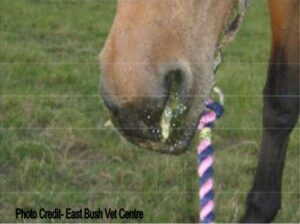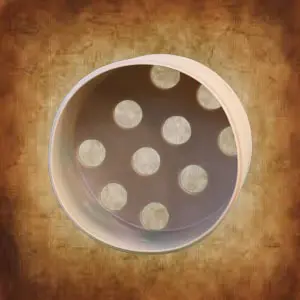
Choke
Choke in horses can be scary. The most obvious signs are discharge of saliva and feed material from the nostrils or mouth. Also apparent difficulty in swallowing. When choking some horses will panic and make repeated unsuccessful efforts to swallow, cough or 'gag' as though trying to clear something from the back of the throat. Although many cases clear on their own, if you think your horse has choked, call your veterinarian immediately.
Most Common Cause of Choke
The most common cause of choke is swallowing food or other material that is either too dry or coarse. Not chewing properly can cause the food to not be mixed well with saliva so they swallow it too dry. This can cause it to be slowed or stopped as it goes down the esophagus. Any condition that interferes with the horse's ability to swallow such as injury to the neck or esophagus can also predispose to choke.
Not Chewing Thoroughly
Hay is pressed into clumps when it is processed forcing the horse to take unnaturally large bites. These large mouthfuls cannot be sufficiently chewed and adequately lubricated to be easily swallowed. Using a Porta-Grazer allows the horse tears off each bite sizing it to his particular needs. He is then able to chew and thoroughly lubricate each bite before swallowing.
Preventing Choke When Feeding Pellets
Some horses cant have hay. Their forage is provided in pellet form. However a lot horses tend to grab huge mouthfuls at time. This can lead to choke due to not chewing enough to sufficiently mix in adequate amounts of saliva to lubricate the pellets before swallowing.
To help prevent this Porta-Grazer has a pellet pan for the XL and Mini model that only allows a few pellets at a time to roll to the top. This gives the horse ample chew time.

